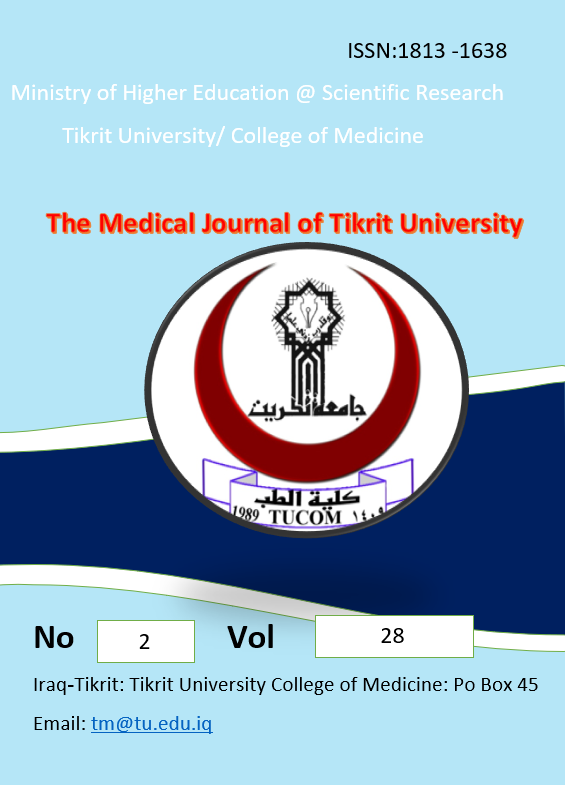Candida Albicans Detection and Antifungal Sensitivity Among Children Less Than 2 Years Old in Diyala Province/ Iraq
Keywords:
Candida albicans, fungal infection, children and antifungal sensitivity.Abstract
Background: Genus Ca ndida is the major yeast infecting humans. Ca ndida albica ns (C. albica ns) have a role in the most opportunistic yeast infections in candidiasis, yet remains as the most common between genus species. About (50-90) % of human candidiasis occurs due to such yeast. Objectives: This research aims to detect, isolate and identify C. a lbica ns, also examining the C. albica ns susceptibility to some antifungal agents. Methods: A total of 200 dermal and oral children’s samples have been collected, their age was not more than 2 years., the diagnosis was made via conducting a confirmative and routine process through direct microscopic examination. Then, they have been cultured on Sabouraud Dextrose Agar (SDA) as well as microscopic examination related to colonies and sub- cultured on the CHROM agar which has been a selective media used for identifying the species of ca ndida. C. albica ns were identified via the use of a germ tube test.
Results: From those 200, a total of 91 have been diagnosed as Ca ndida spp. infections. In terms of GIT, C. non a lbica ns was maximum (20%) and C. a lbica ns for diaper rash was (20%). In a total of 60 isolates Ca ndida spp., the results of anti-fungal susceptibility were equivalent for nystatin and amphotericin B. where, 56,7% of isolates were sensitive, while 41,7% and 1,7% of the isolates are resistant and intermediate, respectively. whereas for ketoconazole, 13,3% of isolates were sensitive, also 85,0% and 1,7% were resistant and intermediate to ketoconazole, respectively, lastly, 23,3%, 25,0% and 51,7% of isolates were intermediate, sensitive and resistant to polymyxin, respectively.
Conclusions: An increase in fungal infections and resistance to antifungal medications due to the increased usage of some immunosuppressive medications and extreme chemotherapy.





